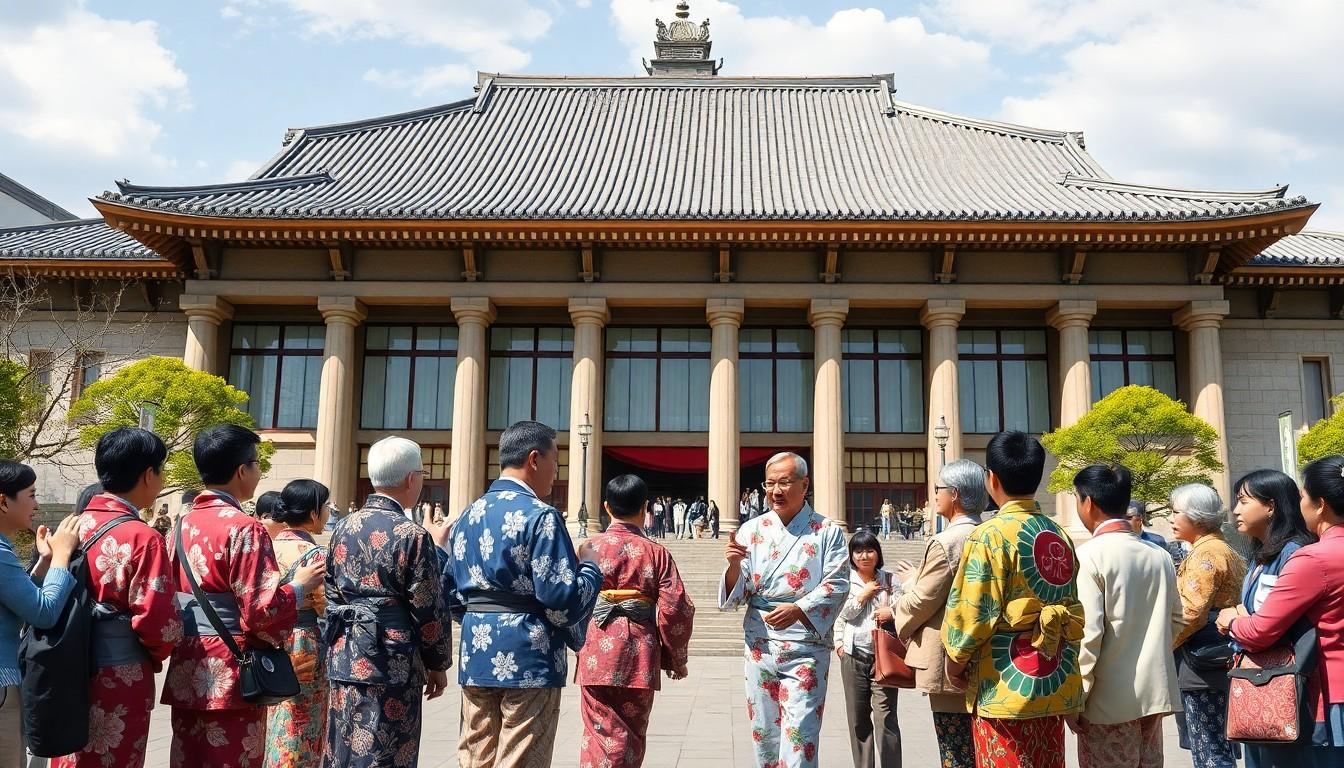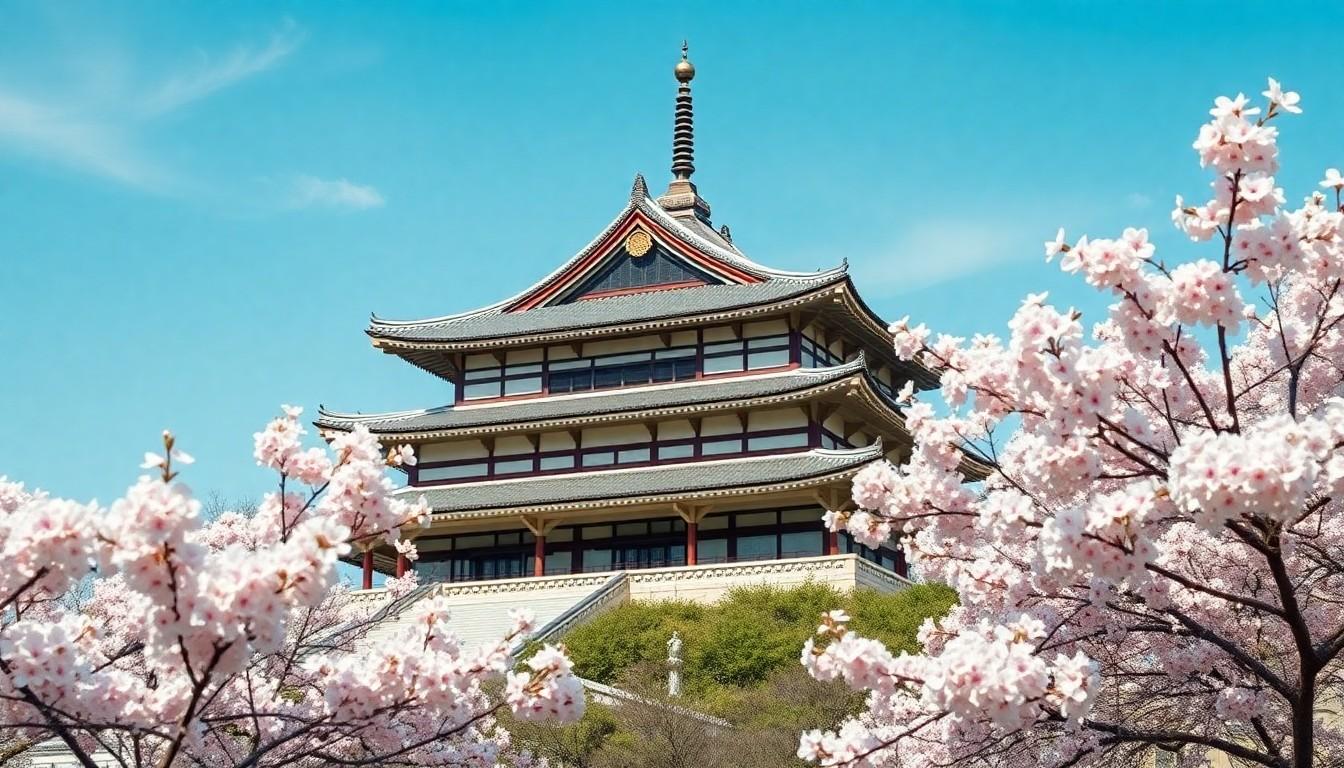Physical Address
304 North Cardinal St.
Dorchester Center, MA 02124

Japanese politics might sound like a snooze-fest, but don’t be fooled. It’s a captivating blend of tradition, innovation, and the occasional plot twist that could rival a soap opera. From the ancient influence of the samurai to the modern-day debates over technology and diplomacy, Japan’s political landscape is anything but boring.
Imagine a world where politicians don’t just wear suits but also sport kimonos at formal events. Here, the balance of power dances between the ruling party and the opposition like a well-rehearsed kabuki performance. Whether it’s navigating economic challenges or addressing social issues, Japanese politicians keep the audience guessing. Dive into this intriguing realm where history meets modernity, and discover how Japan’s unique political culture shapes not just its future, but the global stage as well.
Japanese politics features a multi-party system with the Liberal Democratic Party (LDP) dominating the landscape. This party typically aligns with conservative values and has been in power for most of the post-war era. The LDP’s influence shapes legislative agendas, reflecting the interests of various factions and interest groups.
The National Diet serves as Japan’s bicameral legislature. Comprising the House of Representatives and the House of Councillors, it plays a crucial role in proposing and approving laws. The House of Representatives holds greater authority, including power over budget proposals and the ability to select the Prime Minister.
Political parties in Japan also embrace diverse ideologies. The Constitutional Democratic Party, for instance, advocates for progressive reforms and individual rights. Meanwhile, smaller parties often emerge in response to specific issues, such as environmental protection or social welfare, adding diversity to the political discourse.
Elections occur frequently, with general elections for the House of Representatives happening every four years. Voter participation can fluctuate, influenced by public sentiment and policy issues. The electoral process combines both single-member districts and proportional representation, promoting varied political representation.
Public opinion plays a significant role in shaping policies. Politicians must navigate complex social dynamics and respond to the electorate’s needs. Key issues often include economic stability, social security, and Japan’s role on the international stage.
Thus, Japanese politics thrives on a blend of tradition, party dynamics, and public engagement. It reveals a vibrant system where historical influences meet contemporary demands. As the political landscape continues to evolve, its multifaceted nature will undoubtedly impact Japan’s future direction and global interactions.

Japanese politics reflects a rich tapestry woven from its historical experiences. Events from the past continue to influence contemporary political dynamics.
The post-war era marked a significant transformation in Japan’s political framework. The Liberal Democratic Party (LDP) emerged as a dominant force, aligning itself with conservative values and largely dictating legislative agendas since 1955. Political stability characterized these decades, as LDP maintained power through a blend of patronage and electoral support. The United States played a crucial role in shaping Japan’s democratic institutions during this period. A focus on economic recovery and development led to rapid industrialization, profoundly impacting political priorities and citizen engagement.
Several key events have shaped the current political landscape in Japan. The 1993 election delivered a shock by breaking the LDP’s long-standing dominance, signaling shifts in voter sentiments. The economic bubble burst in the early 1990s transformed public trust, prompting demands for transparency and accountability. The 2011 Fukushima nuclear disaster further influenced political discourse, leading to greater emphasis on energy policy and disaster preparedness. A rise in social movements focused on issues like women’s rights and environmental protection illustrate changing societal values. These events collectively paved the way for the emergence of new political forces and altered the dynamics of Japanese governance.
Japan’s political system is characterized by its distinct structure and vibrant processes. Understanding the organization of its branches is essential for grasping how governance operates.
Japan’s legislative authority lies within the National Diet, which consists of two chambers: the House of Representatives and the House of Councillors. The House of Representatives includes 465 members elected for four-year terms, with greater influence over budgetary matters and Prime Minister selection. In contrast, the House of Councillors features 245 members, serving six-year terms, offering checks and balances to the House of Representatives. Legislative proposals require ratification by both chambers, emphasizing a collaborative effort in policymaking. The Diet not only debates and enacts laws but also conducts oversight of the executive branch, ensuring accountability.
The Prime Minister leads Japan’s executive branch, appointed by the Diet from among its members. This role is pivotal in coordinating government policies and representing Japan in international matters. The Prime Minister relies on a cabinet comprised of various ministers responsible for key government functions, including finance, foreign affairs, and education. Each minister must gain the support of the Diet to maintain their position. The executive branch plays a crucial role in addressing Japan’s economic, social, and environmental challenges, shaping the nation’s statutes and public services through effective governance.
Japan’s judicial system operates independently from the governing branches, ensuring fair administration of justice. The Supreme Court stands at the top, comprising 15 justices appointed by the Prime Minister and approved by the Diet. Its responsibilities include interpreting laws and reviewing their constitutionality. Below the Supreme Court, district courts, high courts, and family courts handle various cases, including civil, criminal, and administrative disputes. A strong emphasis on due process and legal representation underpins the judicial framework, fostering public faith in legal outcomes and reinforcing the rule of law.
Japanese politics features several influential parties that shape the nation’s legislative agenda. Understanding each of these parties reveals their role in Japan’s dynamic political landscape.
The Liberal Democratic Party, or LDP, plays a dominant role in Japan’s political arena. Established in 1955, it has maintained a conservative platform that emphasizes economic growth and national security. This party has consistently won elections, leveraging its extensive network of support. LDP leadership has introduced various policies aimed at revitalizing the economy, especially after periods of stagnation. It often aligns with business interests, seeking to foster a pro-business environment. The party’s strong ties to rural regions further enhance its electoral base, ensuring longevity in power.
The Constitutional Democratic Party emerged in 2017 as a progressive alternative to the LDP. With a focus on social justice, environmental sustainability, and civil rights, it caters to voters seeking substantial reform. This party advocates for transparent governance and a more inclusive political dialogue. Significant membership growth occurred since its inception, drawing support from younger generations. Policy proposals from the Constitutional Democratic Party seek to address pressing issues, including economic inequality and climate change. Through grassroots movements, it strives to connect with citizens and amplify their concerns.
Small political parties and movements are gaining traction in Japan’s evolving political landscape. Issues such as environmental protection, women’s rights, and anti-nuclear sentiments drive these emerging forces. Various parties challenge the status quo, advocating for targeted reforms. The Social Democratic Party, for example, emphasizes social welfare and labor rights, while the Green Party promotes sustainability and ecological awareness. Increased voter engagement highlights a demand for diverse representation, indicating a shift in political priorities. More grassroots efforts amplify these calls for change, reflecting broader public sentiment and growing discontent with traditional party politics.
Japan faces a range of political issues, prominently featuring economic challenges and foreign relations dynamics.
Economic stability stands as a central concern for Japanese policymakers. High public debt, approximately 258% of GDP, challenges government spending and investment. Inflationary pressures emerged recently, raising questions regarding the Bank of Japan’s monetary policies. Wage stagnation affects consumer spending, significantly hampering economic growth. Additionally, demographic shifts, particularly an aging population, strain social security systems and workforce availability. Efforts to revitalize the economy include promoting innovation and attracting foreign investment. Investments in technology and sustainable initiatives aim to enhance productivity and create new job opportunities.
Foreign relations continue to be a vital focus for Japan’s political landscape. Relationships with the United States, China, and South Korea shape Japan’s strategic stance in the Asia-Pacific region. Tensions with North Korea persist, driven by missile tests and nuclear ambitions. Japan seeks to strengthen its security alliances, particularly with the U.S., to counter regional threats. Ongoing trade discussions highlight the complexities of economic interdependence, particularly with China. Japan’s commitment to multilateral partnerships addresses global challenges, such as climate change and economic cooperation. Diplomatic efforts emphasize regional stability and collaborative security arrangements, focusing on shared interests.
Japanese politics presents a captivating interplay of tradition and modernity. The ongoing evolution of political ideologies and the emergence of new parties reflect a society increasingly engaged in its governance. As the nation grapples with pressing economic and social challenges, the dynamic political landscape remains responsive to public sentiment.
The intricate balance between historical influences and contemporary demands shapes Japan’s future direction. With a commitment to transparency and accountability, the political arena is poised for ongoing transformation. As Japan navigates its role on the global stage, the vibrant political discourse will continue to play a crucial part in addressing both domestic and international issues.